
Pacific Ocean, Atlantic Ocean & Indian Ocean
Subscribe to Never Miss an Important Update! Assured Discounts on New Products!
Must Join PMF IAS Telegram Channel & PMF IAS History Telegram Channel
Rs. 393
in stock
3 new from Rs. 393
1 used from Rs. 290
as of April 26, 2024 8:52 AM
Amazon.in
Last updated on April 26, 2024 8:52 AM
The Pacific Ocean
- Largest and deepest ocean.
- Covers about one-third of the earth’s surface.
- Average depth is generally around 7,300 metres.
- Its shape is roughly triangular with its apex in the north at the Bering Strait.
- Many marginal seas, bays and gulfs occur along its boundaries.
- Nearly 20,000 islands dot this vast ocean.
North and Central Pacific
- Characterized by maximum depth and a large number of deeps, trenches and islands.
- Some well-known trenches are Aleutian and Kuril.
- There are also a large number of seamounts and guyots. [Hawaiian Hotspot]
West and South-West Pacific
- Average depth is about 4,000 m.
- It is marked by a variety of islands, marginal seas, continental shelves and submarine trenches.
- Mariana Trench and Mindanao Trench are very deep with a depth of more than 10,000 metres.
South-East Pacific
- This part is conspicuous for the absence of marginal seas, and has submarine ridges and plateaus.
- The Tonga and Atacama trenches are prominent.
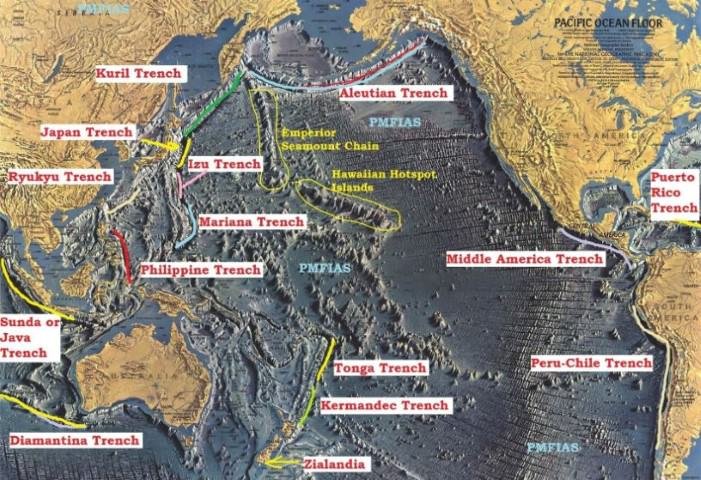
The Atlantic Ocean
- The Atlantic is the second largest ocean after the Pacific.
- It is roughly half the size of the Pacific Ocean.
- It’s shape resembles the letter ‘S’.
- In terms of trade, it is the most significant of all oceans.
Continental Shelf
- It has prominent continental shelf with varying widths.
- The length of the continental shelf is maximum in Northern Atlantic coasts.
- The largest width occurring off north-east America and north-west Europe.
- Grand banks continental shelf is the most productive continental shelf in the world. [Recall fishing industry in Laurentian Climate]
- The Atlantic Ocean has numerous marginal seas occurring on the shelves, like the Hudson Bay, the Baltic Sea, and the North Sea, and beyond the shelves like the Gulf of Florida (Mexican Gulf).
Mid-Atlantic Ridge
- The most remarkable feature of the Atlantic Ocean is the Mid-Atlantic Ridge which runs from north to the south paralleling the ‘S’ shape of the ocean.
- The ridge has an average height of 4 km and is about 14,000 km long.
Seamounts and guyots
- They are present in significant numbers but not as significant as in pacific ocean.
- Several seamounts form islands of the mid-Atlantic. Examples include Pico Island of Azores, Gape Verde Islands, Canary Islands etc..
- Also, there are coral islands like Bermuda and volcanic islands like, St Helena etc..
Trenches
- Atlantic Ocean lacks significant troughs and trenches, which are most characteristic to the Pacific Ocean.
- North Cayman and Puerto Rico are the two troughs and Romanche and South Sandwich are the two trenches in the Atlantic Ocean.
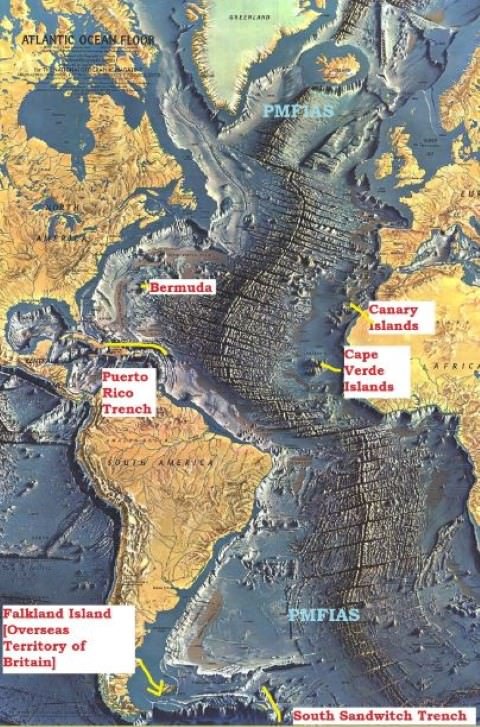
The Indian Ocean
- Indian Ocean is the third largest of the world’s oceanic divisions.
- Smaller and less deep than the Atlantic Ocean.
Submarine ridges
- Submarine ridges in this ocean include the Lakshadweep-Chagos Ridge [Reunion Hotspot], the Socotra-Chagos Ridge, the Seychelles Ridge, the South Madagascar Ridge, Carlsberg Ridge etc..
- These ridges divide the ocean bottom into many basins. Chief among these are the Central Basin, Arabian Basin, South Indian Basin, Mascarene Basin, West Australian and South Australian Basins.
Islands
- Most of the islands in the Indian Ocean are continental islands and are present in the north and west.
- These include the Andaman and Nicobar, Sri Lanka, Madagascar and Zanzibar. The Lakshadweep and Maldives are coral islands and Mauritius and the Reunion Islands are of volcanic origin. The eastern section of the Indian Ocean is almost free from islands
Continental Shelf
- The ocean’s continental shelves are narrow, averaging 200 kilometres (120 mi) in width.
- An exception is found off Australia’s northern coast, where the shelf width exceeds 1,000 kilometres (620 mi).
- The average depth of the ocean is 3,890 m (12,762 ft).
Trenches
- Linear deeps are almost absent. Few exceptions are Sunda Trench, which lies to the south of the island of Java and Diamantina Trench, west of Australia.
- Its deepest point is Diamantina Deep in Diamantina Trench, at 8,047 m. Sunda Trench off the coast of Java is also considerably deep.
Straits
- Most of the straits in Indian Ocean are important trade roots.
- The major choke points include Bab el Mandeb, Strait of Hormuz, the Lombok Strait, the Strait of Malacca and the Palk Strait.
Marginal seas
- Arabian Sea
- Persian Gulf
- Red Sea
- Gulf of Oman
- Gulf of Aden
- Strait of Bab-el-Mandeb connecting Arabian Sea
- Gulf of Kutch
- Gulf of Khambat
- Palk Strait connecting Arabian Sea and Bay of Bengal
- Bay of Bengal
- Andaman Sea
- Malacca Strait
- Mozambique Channel
- Great Australian Bight
- Gulf of Mannar
- Laccadive Sea
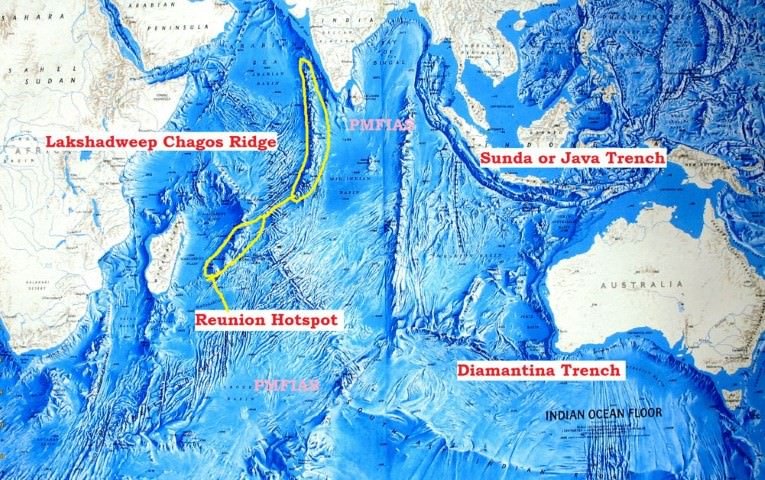
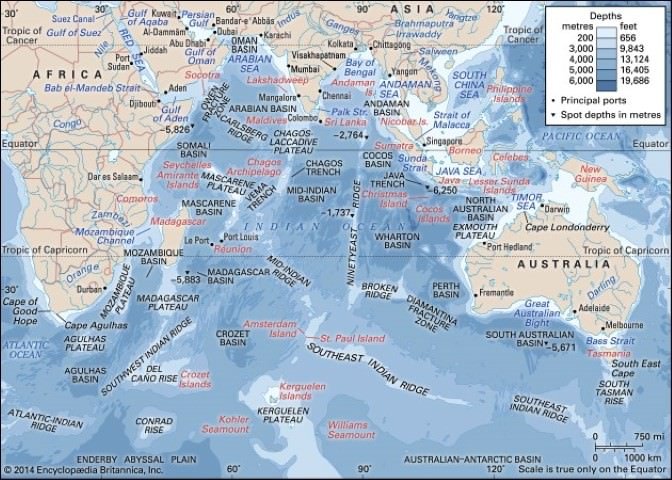
Primary References: NCERT Geography, Spectrum’s Geography [Amazon and Flipkart] and Savindra Singh [Amazon and Flipkart]
Rs. 393
in stock
3 new from Rs. 393
1 used from Rs. 290
as of April 26, 2024 8:52 AM
Amazon.in
Last updated on April 26, 2024 8:52 AM





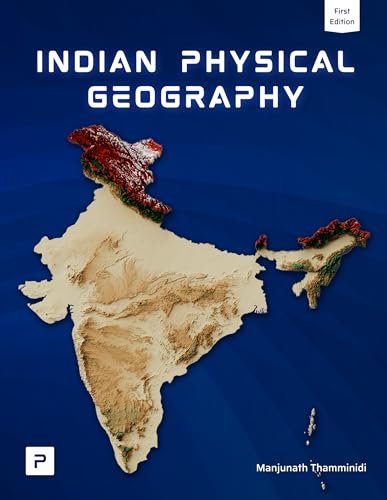
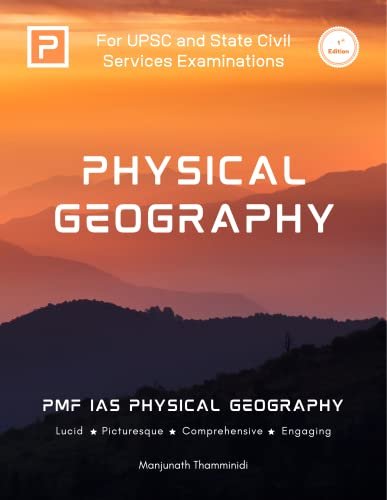

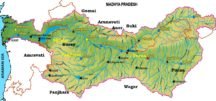
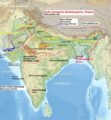
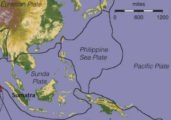
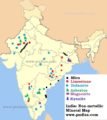

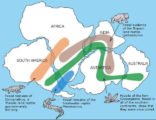





pacific ocean in the earth rotation system